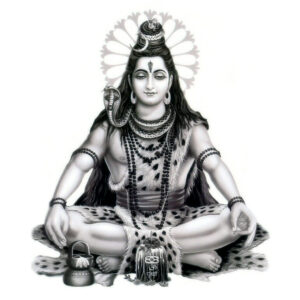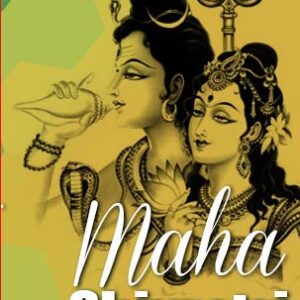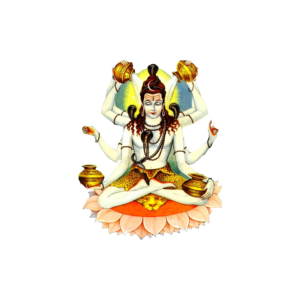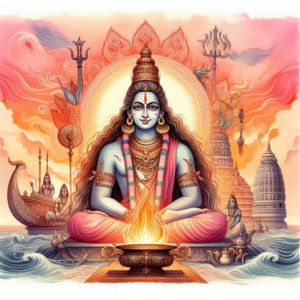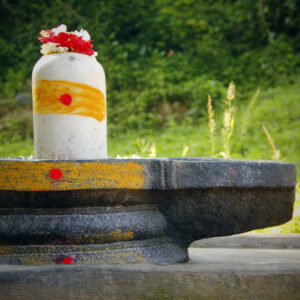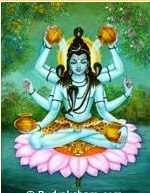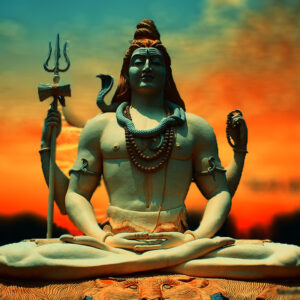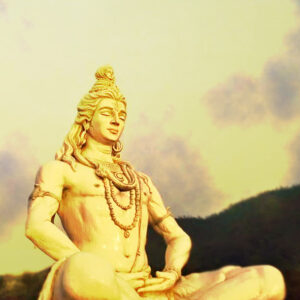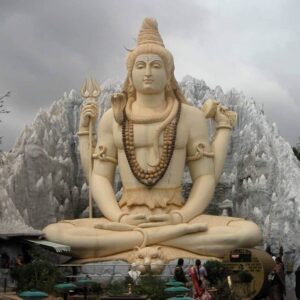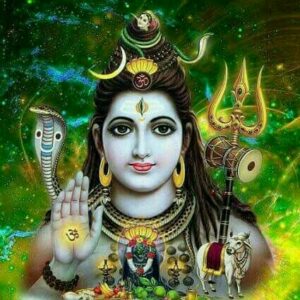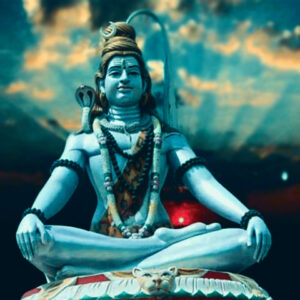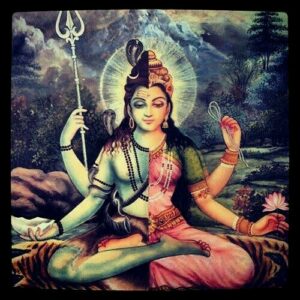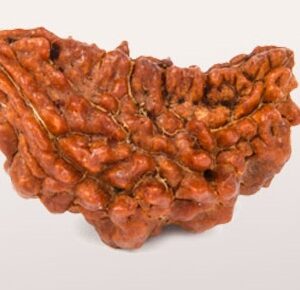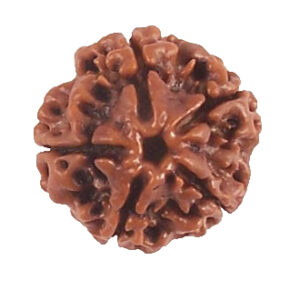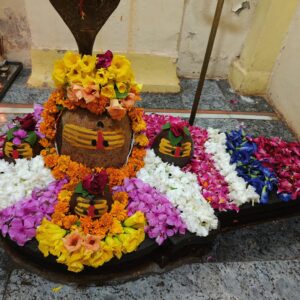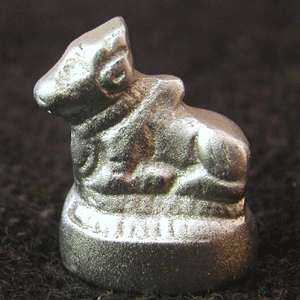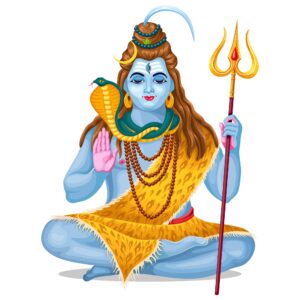Maha Shivaratri 2026 | महाशिवरात्रि 2026 | Mahashivratri 2026
Live Puja Yagya extends heartfelt wishes of health, wealth, and happiness to all patrons and visitors this Maha Shivaratri 2026 and beyond.
Maha Shivaratri, one of the most sacred festivals for Hindu worshippers, is celebrated in honor of Lord Shiva on Sunday, February 15, 2026. This festival takes place on the 13th/14th night of Krishna Paksha in the Maagh month. The term “Shiva Ratri” means “Night of Lord Shiva.”
What is Maha Shivaratri?
Maha Shivaratri is an important Hindu festival celebrated across India and by followers worldwide. The name itself, “Shiva Ratri,” literally translates to “Night of Lord Shiva.” It’s a time for introspection, devotion, and prayer, observed by both men and women with great reverence.
Significance of Mahashivratri
Mahashivratri honors Lord Shiva’s role as both the creator and destroyer. This festival is a reminder of the impermanence of life and the cycle of birth, death, and rebirth. Devotees pray to Lord Shiva on this night, hoping to attain his blessings for peace, prosperity, and protection from negative influences.
Maha Shivaratri 2026: Key Dates and Puja Muhurat
Mark your calendars with the following important timings for Maha Shivaratri 2025:
- Chaturdashi Tithi Begins: 05:04 PM on February 15, 2026
- Chaturdashi Tithi Ends: 05:34 PM on February 16, 2026
- Nishita Kaal Puja Time: 12:09 AM to 01:01 AM (February 15)
- (Night)Ratri 4 Prahar Puja Time:
Ratri First Prahar Puja Time: 06:11 PM to 09:23 PM
Ratri Second Prahar Puja Time: 09:23 PM to 12:35 AM, Feb 16
Ratri Third Prahar Puja Time: 12:35 AM to 03:47 AM, Feb 16
Ratri Fourth Prahar Puja Time: 03:47 AM to 06:59 AM, Feb 16
Why Maha Shivaratri is Celebrated: The Story of Neelkanth
According to Hindu Puranas, Maha Shivaratri commemorates the day Lord Shiva consumed the deadly poison that surfaced during the churning of the cosmic ocean (Samudra Manthan). As a pot of poison emerged, capable of devastating the world, Lord Shiva drank it to protect all beings. The poison turned his throat blue, earning him the name Neelkanth (“Blue-Throated One”). Maha Shivaratri is a celebration of his self-sacrifice and compassionate protection of creation.
How Maha Shivaratri is Celebrated
Devotees worldwide come together to honor Lord Shiva on Maha Shivaratri. The festival holds particular significance for women, both married and unmarried. Married women pray to Lord Shiva for the health and happiness of the male members of their family, including their fathers, husbands, and sons. Unmarried women seek his blessings for a suitable partner.
Devotional practices on Maha Shivaratri often include:
- Fasting and Prayers: Many observe a day-long fast to purify their body and mind.
- Puja Offerings: Devotees offer incense, flowers, Panchamrut (a sacred mixture of milk, yogurt, ghee, honey, and sugar), and Bel leaves (Bilwa Patra) to Lord Shiva, as these are considered his favorite.
- All-Night Vigil and Meditation: Many observe an all-night vigil, chanting prayers and hymns in Lord Shiva’s honor.
Special Recommendations for Maha Shivaratri Puja
-
(Mercury) Parad Store
Parad Nandi
₹ 999.00Original price was: ₹ 999.00.₹ 789.00Current price is: ₹ 789.00.
-: About Lord Shiva :-
Lord Shiva, the third deity of the revered Hindu Trinity, is a unique and powerful figure embodying both fearsome and compassionate qualities. His role within the trinity—alongside Brahma, the Creator, and Vishnu, the Preserver—establishes him as the Destroyer, symbolizing both destruction and transformative rebirth. Let’s explore why Lord Shiva is so widely venerated and feared, the different forms in which he is worshipped, the significance of his family and symbols, and how the auspicious Maha Shivaratri festival celebrates his essence.
The Essence of Lord Shiva
Who is Lord Shiva?
Lord Shiva is revered for his immense power, balanced by his serene nature and ascetic lifestyle. His abode, Mount Kailash, symbolizes spiritual elevation, while his feared temper represents the destructive force of the universe. Shiva’s duality—charming and daunting, gentle and fierce—fascinates his followers and exemplifies the coexistence of opposites.
The Meaning of Shiva’s Blue Throat and His Role as Neelkanth
The story of Shiva’s blue throat, or “Neelkanth,” is a widely known legend. During the cosmic churning of the ocean (Samudra Manthan), a pot of poison emerged, threatening to destroy all creation. Lord Shiva drank this poison, which turned his throat blue, symbolizing his role as the protector who absorbs our pain and impurities.
Symbols and Attributes of Lord Shiva
The Third Eye
Shiva’s third eye symbolizes the power of inner vision, knowledge, and the ability to see beyond the physical. It represents the destructive fire that burns away ignorance and illusions, allowing his devotees to reach higher consciousness.
The Snake Around His Neck
Shiva’s snake, coiled around his neck, is a symbol of power over deadly elements and worldly desires. It serves as a reminder of his mastery over time and death, attributes that continue to inspire reverence and fear among his devotees.
The Ganges River and His Matted Locks
The Ganges River flows from Lord Shiva’s hair, symbolizing purity and the cleansing of human sins. According to mythology, Shiva allowed the river to descend to Earth, cushioning its impact in his locks and blessing humanity with its divine waters.
Lord Shiva’s Vehicle – Nandi the Bull
Nandi, the devoted bull and mount of Lord Shiva, represents strength, loyalty, and righteousness. Always vigilant at Shiva’s feet, Nandi is a symbol of Shiva’s power and authority, as well as a faithful servant.
Forms of Lord Shiva
Shiva in Meditation
The meditative form of Lord Shiva is peaceful, tranquil, and introspective, depicting his deep connection with the inner self. Devotees find this form comforting, as it reflects inner divinity and calm.
Shiva in the Dance of Tandava
In contrast to his meditative state, Shiva’s Tandava dance represents cosmic destruction and renewal. The Nataraja, or “Lord of the Dance,” form captures Shiva’s dynamic energy and is often displayed in homes to inspire transformation and renewal.
The Lingam – Most Powerful Symbol of Shiva
The Shiva Lingam is a potent symbol representing Lord Shiva’s universal energy. It is considered auspicious for worship and is a mainstay in temples across India, reminding devotees of his creative and regenerative power.
Lord Shiva’s Sacred Temples
India is home to thousands of Shiva temples, each a center of devotion. However, twelve Jyotirlinga temples hold special significance as the holiest seats of Lord Shiva, believed to absolve sins and fulfill desires.
List of 12 Jyotirlinga Temples
- Somnath (Gujarat)
- Mahakaleshwar (Ujjain, M.P.)
- Kedarnath (Uttarakhand)
- Bhimashankar (Maharashtra)
- Omkareshwar (Madhya Pradesh)
- Trimbakeshwar (Maharashtra)
- Kashi Vishwanath (Varanasi, U.P.)
- Grishneshwar (Maharashtra)
- Vaidyanath (Jharkhand)
- Rameshwaram (Tamil Nadu)
- Nageshwar (Gujarat)
- Mallikarjuna (Andhra Pradesh)
The Family of Lord Shiva
Lord Shiva is a family man, contrary to his ascetic image, and his divine family includes his consort Parvati, the goddess of power, and their children, Ganesha and Kartikeya.
Goddess Parvati – The Consort and Balance
As Shiva’s eternal companion, Parvati represents Shakti, or the divine feminine energy that balances Shiva’s masculine force. Their union is symbolic of universal harmony.
Lord Ganesha and Kartikeya – The Sons of Shiva
Ganesha, the remover of obstacles, and Kartikeya, the god of war, complete Lord Shiva’s family. Together, they reflect different aspects of his influence, from wisdom to strength.
Celebrating Maha Shivaratri – The Night of Lord Shiva
Maha Shivaratri, celebrated on the 13th night of the Maagh month, is a sacred festival dedicated to Lord Shiva. It is a time for introspection, prayer, and fasting, observed by devotees seeking blessings and spiritual growth.
Significance of Maha Shivaratri
Some believe this night marks the divine marriage of Shiva and Parvati, while others see it as the night Shiva performed the cosmic Tandava dance. Regardless, Maha Shivaratri encourages devotees to meditate, pray, and connect with the divine.
Puja Rituals for Maha Shivaratri
Devotees often fast, staying awake all night to meditate and perform special pujas, including the offering of milk, water, and Bilva leaves to the Shiva Lingam.
Mantras for Maha Shivaratri
The Maha Mrityunjaya Mantra is especially significant for Maha Shivaratri. This mantra, “Om Tryambakam Yajamahe,” is believed to grant health, wealth, and spiritual liberation.
The Spiritual Significance of Maha Shivratri
Maha Shivratri is believed to be a time when the planetary positions are aligned in a way that favors spiritual growth. It is said that sincere worship of Lord Shiva on this night can help devotees cleanse their karmas, break free from the cycle of rebirth, and attain Moksha (liberation).
The Universal Appeal of Maha Shivratri
In today’s world, Maha Shivratri is celebrated not only in India but across the globe. People from various backgrounds come together to honor Lord Shiva, embracing the virtues of peace, compassion, and humility.
This Maha Shivratri, Live Puja Yagya extends warm wishes for health, happiness, and prosperity to all patrons and visitors, hoping that Lord Shiva’s blessings shine upon you, guiding you towards peace and fulfillment.
Benefits of Worshipping Lord Shiva on Maha Shivratri
- Soul Purification: Bathing the Shiva Lingam with sacred substances represents the cleansing of one’s spirit.
- Increased Virtue: Applying vermilion paste to the Lingam symbolizes a commitment to righteousness.
- Longevity and Happiness: Offering fruits reflects gratitude and a desire for a fulfilling life.
- Prosperity: Burning incense during puja invites wealth and abundance.
- Knowledge and Wisdom: Lighting oil lamps signifies enlightenment and the pursuit of knowledge.
- Contentment with Life’s Pleasures: Betel leaves mark satisfaction with the blessings of life.
How to Prepare for Maha Shivratri 2026
If you’re planning to celebrate Maha Shivaratri this year, here are a few preparation tips:
- Cleanse Your Space: Prepare a clean and serene environment at home or in your place of worship.
- Arrange Puja Essentials: Gather items like incense, flowers, Panchamrut, and Bel leaves.
- Plan for Fasting: Decide on a fasting plan that you can maintain comfortably.
- Set Up a Puja Altar: Arrange an altar with images or idols of Lord Shiva for the puja.
Maha Shivaratri Across India: Diverse Celebrations
While the core essence of Maha Shivaratri remains the same, different regions in India have unique ways of celebrating this festival.
- Northern India: Devotees gather in large numbers in temples and observe the festival with fasting, chanting, and prayers.
- Western India: Many engage in kirtans (devotional songs) and dance to honor Lord Shiva.
- Southern India: In places like Tamil Nadu, Maha Shivaratri is celebrated with music and dance performances dedicated to Lord Shiva.
Why Maha Shivaratri is Important in Modern Times
In a world that often feels fast-paced and disconnected, Maha Shivaratri offers a time to pause, reflect, and reconnect with the divine. Observing this festival brings devotees closer to Lord Shiva and serves as a reminder of the impermanence of life and the power of faith.
Conclusion
Maha Shivratri 2026 invites all devotees to experience a profound journey of faith, devotion, and inner transformation. By celebrating this festival, we honor Lord Shiva’s protective power and his role in the cosmic cycle of creation and destruction. Live Puja Yagya sends its warmest wishes to all patrons and visitors for a Maha Shivaratri filled with blessings, peace, and spiritual fulfillment.
Worshipping Lord Shiva is not merely a religious act but an exploration of the self. His qualities—strength and humility, peace and fierceness—offer lessons for all devotees. Maha Shivratri allows us to deepen our connection to this universal energy, and in doing so, we welcome his blessings for health, wealth, and happiness.
FAQs
-
What is the significance of Maha Shivratri?
- Maha Shivratri is a festival dedicated to Lord Shiva, symbolizing devotion, purification, and liberation.
-
Why do people fast on Maha Shivaratri?
- Fasting on Maha Shivaratri is a form of purification, allowing devotees to focus fully on prayers and devotion to Lord Shiva.
-
What does “Neelkanth” mean in relation to Lord Shiva?
- “Neelkanth” means “Blue-Throated One,” referring to Lord Shiva drinking poison to save humanity.
-
What should be offered to Lord Shiva on Maha Shivaratri?
- Offerings include incense, flowers, Panchamrut, and Bel leaves, which are sacred to Lord Shiva.
-
How can one attain Moksha through Maha Shivaratri?
- Sincere worship and devotion to Lord Shiva on this night are believed to cleanse karma and bring liberation from the cycle of rebirth.


